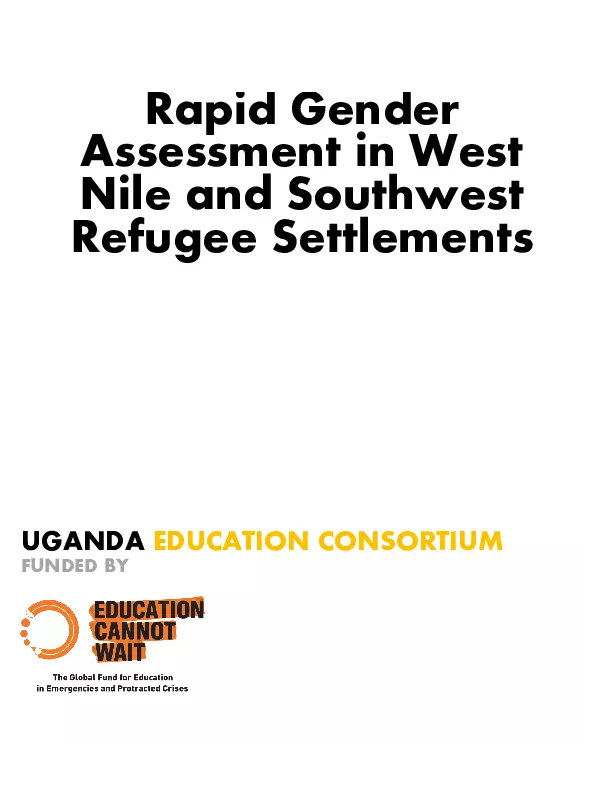
Study: Assessments
Rapid Gender Assessment in West Nile and Southwest Refugee Settlements
Publication year:
2024
English
Format:
PDF (411.9 KiB)
Publisher:
Save the Children International,Save the Children Uganda
As of April 2024, Uganda is home to over 1.6 million refugees and asylum seekers. The MYRP II addresses three key education outcomes: (I) Improved Access and Retention to Inclusive and Gender Transformative Learning and Training Opportunities; (II) Improved delivery of quality education and training and (III) Strengthened systems for effective and resilient service delivery and is thus fully aligned to the Education Response Plan for Refugees and Host Communities (ERP).
The MYRP II directly contributes to the ambitions of relevant policies and plans, including the ERP, National Development Plan (NDP) III and Gender in Education Policy, focusing on enhanced access and participation for girls and boys, improved gender parity in access and learning outcomes and the creation of an enabling, protective and gender responsive learning environment. The MYRP contributes to the creation of a gender transformative learning environment by deliberately targeting girls, based on their specific needs, including those related to menstrual hygiene management, teenage pregnancy and safety. The MYRP also supports Head Teachers, SMC/PTA members and other stakeholders to accurately operationalize the Revised Guidelines on Prevention and Management of Teenage Pregnancy in School Settings in Uganda (2020). All activities are implemented with considerations for the needs of boys and girls.
Additionally, the MYRP II has a Gender Lead Organization (GLO), Plan International, whose role in the consortium is to strengthen the capacity of MYRP partners to deliver gender transformative programming, while ensuring that gender considerations are well-embedded with the design and delivery of the MYRP. The GLO ensures that gender capacity strengthening, monitoring, and coordination is prioritized by all partners, that activities are at a minimum gender sensitive, and that gender equality and empowerment of women and girls is clearly articulated in the annual report and annual performance assessments conducted with the ECW Secretariat.
Gender analyses helps to identify gender inequalities, including both their causes and consequences. Knowledge of how gender inequality impacts on communities helps inform and adapt humanitarian responses, making sure everyone has safe and equal access to, use of, and influence over, the available programmes and services, to ensure we ‘do no harm’ and to ensure that no one is left behind on account of their gender and the systematic discrimination they face. A gender analysis “helps teams better identify and respond to affected people’s needs, based on their gender, age, (dis)ability and other exclusion factors”.
Read full abstract
Authors
View & Download
English
1 Documents
Document information
Format
Content type
Country
Region
Topics
Rights
© Author/Publisher
Keywords
Found a mistake? Help us improve!
If you have noticed a document assigned to the wrong author or any other inaccuracies, let us know! Your feedback helps us keep our data accurate and useful for everyone.
Share
Link
